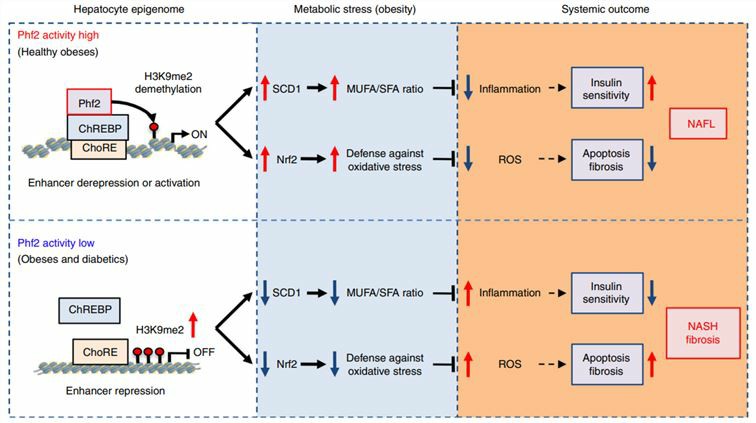PHF2 and Associated Diseases
Creative Biolabs is an expert in the field of gene therapy research. After decades of development and accumulation, we have accumulated rich experience in the field of gene therapy and established an advanced technology platform. We are willing to share the background knowledge related to gene therapy, here we briefly introduce the plant homeodomain finger protein 2 (PHF2) gene and related diseases.
Overview of PHF2
PHF2 is a protein-coding gene that encodes a protein containing a zinc finger-like PHD finger. Unlike other classes of zinc finger motifs, PHD finger genes belong to a distinct group of transcriptional regulators that may regulate eukaryotic gene expression by affecting chromatin structure. PHF2 participates in various biological processes. For example, PHF2 plays a crucial role in cartilage formation during skeletal development. In addition to chondrogenesis, PHF2 is involved in osteoblast differentiation and maturation. Recently, PHF2 was reported to be involved in the regulation of the differentiation process of preadipocytes into mature adipocytes. PHF2 is also an important regulatory factor that inhibits adipocyte differentiation and suppresses the expression of metabolic genes. What's more, PHF2 is necessary for the mediation of macrophage inflammatory responses.
PHF2 and Associated Diseases
- Memory formation
The PHF2 histone demethylase occupies an important position in the regulation of memory-related genes. PHF2 promotes the expression of memory-related genes by epigenetically strengthening the tyrosine kinase B (TrkB)-cAMP-response element-binding protein (CREB) signaling pathway. Furthermore, behavioral tests in mice revealed that transgenic overexpression of PHF2 enhanced memory formation, but silencing of PHF2 in the hippocampus impaired memory formation. These results contribute to the in-depth understanding of the epigenetic regulation of learning and memory formation and provide new ideas for improving memory in patients with degenerative brain diseases.
- Non-alcoholic fatty liver disease (NAFLD)
NAFLD is a common metabolic disorder. Multiple factors contribute to the development of NAFLD, including inflammation, oxidative stress, and hepatocyte apoptosis. In mice and humans, active PHF2-mediated demethylation of histone H3 lysine 9 dimethylation (H3K9me2) functions as a molecular checkpoint to regulate specific metabolic and antioxidant gene programs by interfering with transcription factors. It is worth noting that PHF2 activation is important for protecting the liver from inflammation and oxidative stress during the pathogenesis of NAFLD during obesity.
 Fig.1 Schematic representation of PHF2 action in NAFL development and progression. (Bricambert, 2018)
Fig.1 Schematic representation of PHF2 action in NAFL development and progression. (Bricambert, 2018)
- Cancers
Genome-wide studies have revealed that chromosomal regions including the PHF2 gene are frequently deleted in certain cancers, which heralds a potential role for PHF2 in tumor suppression. Studies have shown that the expression of PHF2 is downregulated in many malignant tumors, including colorectal cancer, gastric cancer and squamous cell carcinoma. In addition, low expression of PHF2 is closely related to the aggressiveness and poor prognosis of renal cell carcinoma.
Potential Molecular Mechanisms of PHF2 in Cancers
p53 is a key tumor suppressor, and PHF2 associates with p53, thereby promoting p53-driven gene expression in cancer cells under genotoxic stress. In PHF2-deficient xenografts, p53 was drug-induced but not its downstream product, p21, suggesting that PHF2 is required for p53 activation. In addition, colon and gastric cancer tissue arrays showed a positive correlation between the expression of PHF2 and p21. Informatics analysis also confirmed the downregulation of PHF2 in colon cancer and gastric cancer. Based on these findings, PHF2 is proposed to act as an epigenetic regulator of the p53 signaling pathway in cancer development.
Creative Biolabs is a world-leading CRO and a recognized leader in the field of gene therapy. Decades of market experience and a comprehensive portfolio of validated analytical methods ensure the most cost-effective service for customers in the pharmaceutical, biotechnology and life science industries. If you are interested in our gene therapy related services, please contact us for more details.
Reference
- Bricambert, J.; et al. The histone demethylase PHF2 acts as a molecular checkpoint to prevent NAFLD progression during obesity. Nature communications. 2018, 9(1): 1-18. Distributed under Open Access license CC BY 4.0, without modification.
